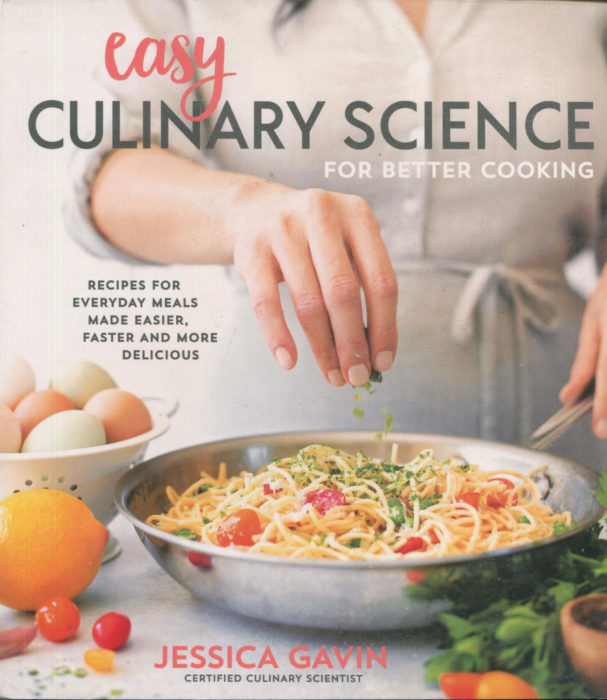
What gives a dish, say Kung Pao Chicken, its punch? Chile peppers to be sure, but exactly what part of the peppers? The skins, those seeds, … It is the chemical capsaicin, which happens to be found in the rib and white pith of the peppers. I never knew that the capsaicin was hidden in those “little parts” of the peppers.
I’m cooking a rack of lamb and I wonder why I roast in the oven instead of just using the stove top and, say, a cast iron pan. Ah, stovetop cooking does not have consistent or controlled heat transfer from pan to the meat. Oven cooking, with hot air surrounding the meat, is the way to achieve the control and consistency you want, as well as retaining more moisture for juicier meat.
I’m making meatballs and the recipe calls for an egg. Why? Well, when the meatballs are cooking, the proteins shrink and release almost 25 % of the internal moisture, a pathway to dry meat. The egg does double duty: liquid to avoid drying and the fat from the egg yolk helps to coat and lubricate the muscle fibers in your meat. That means a more tender meatball.
How did I learn these things? A year in culinary school? In Paris?
No, they are in the Recipe Science notes that dot the pages of Easy Culinary Science by Jessica Gavin. There are cooking science books out there, often thick and a bit hard to understand. Here the intelligence is delivered in delicious recipes. This looks like a cookbook, it is a cookbook, but the recipes come with Cook’s Notes and a Recipe Science sections that describes why the recipe works.
You are happily, gracefully educated on the culinary chemistry involved in each dish. As you apply heat, what is happening? How do you prevent a dish from drying out or toughening? How are sauces formed as meat cooks, how does the blade in your blender affect your vinaigrette?
There are answers here to questions you have never asked yourself, considerations about technique and chemistry that affect your dish in essential ways. If indeed you spent a year in Paris, then you’d learn many of these key points. Here, in Easy Culinary Science the “lessons” come one recipe at a time. You learn and, happily, you can “eat your knowledge.”
This two-hundred page book is a great companion for your own personal semester devoted to culinary science and secrets. You can enroll is this school by just picking up a copy and starting one recipe at a time. You can start with the first recipe and march through the book, but skipping around is equally fine. And skipping is something you might want to do. On Page 167, you’ll learn why dark brown sugar lets cookies stay moist and chewy. It’s a piece of culinary chemistry that is a tad complex and oh so essential to getting the perfect oatmeal cookies.
It’s school time. Look for Easy Culinary Science.
